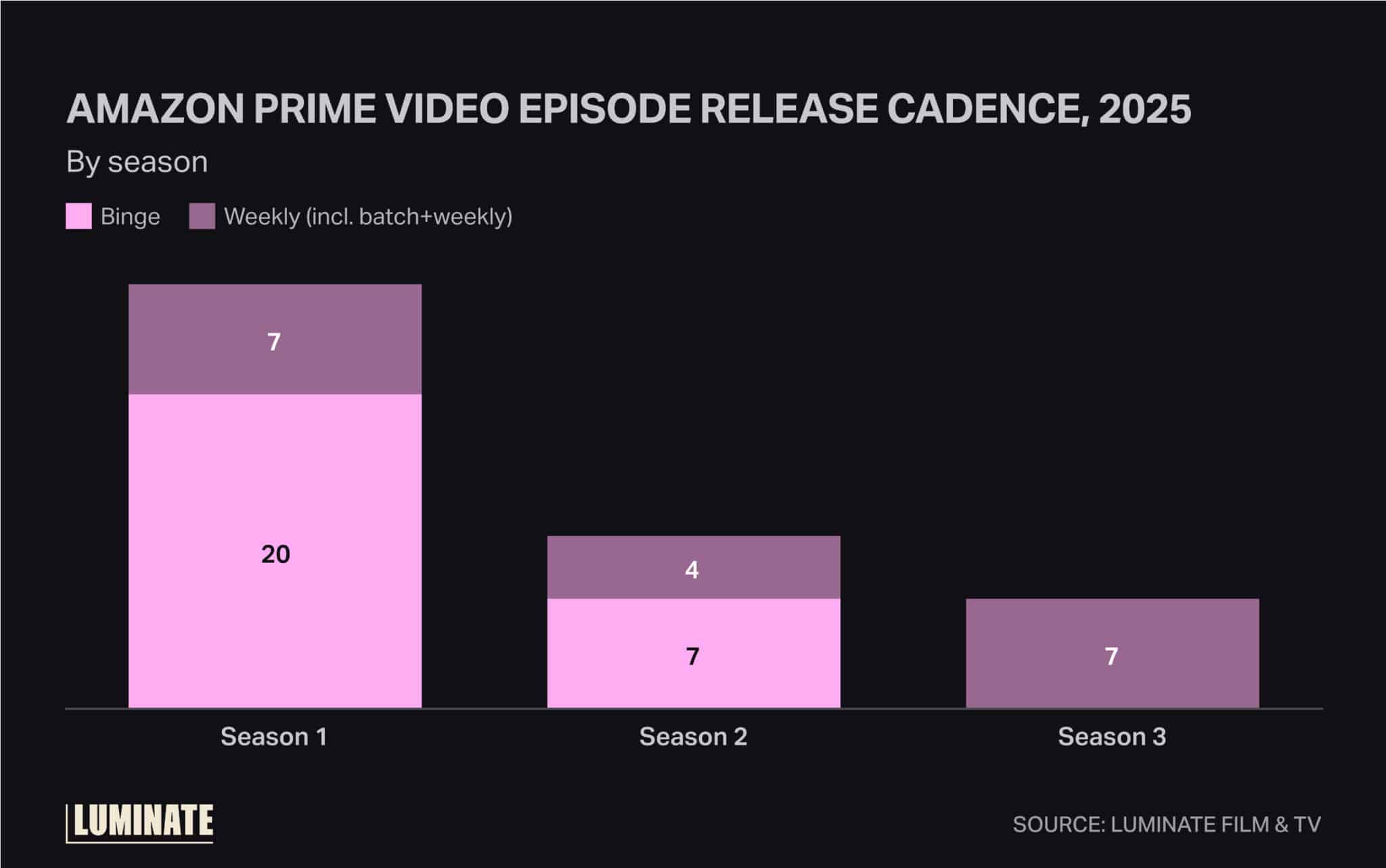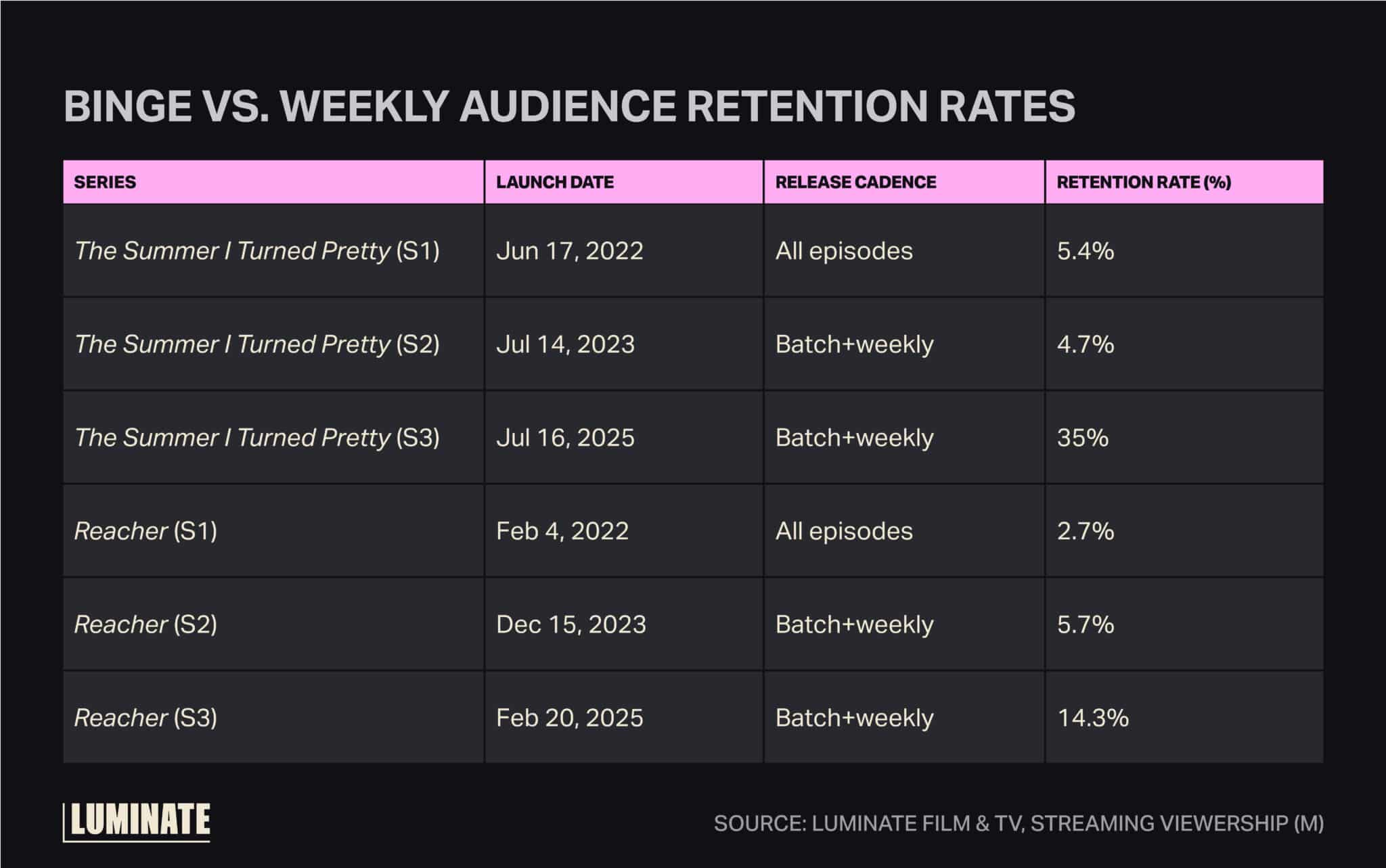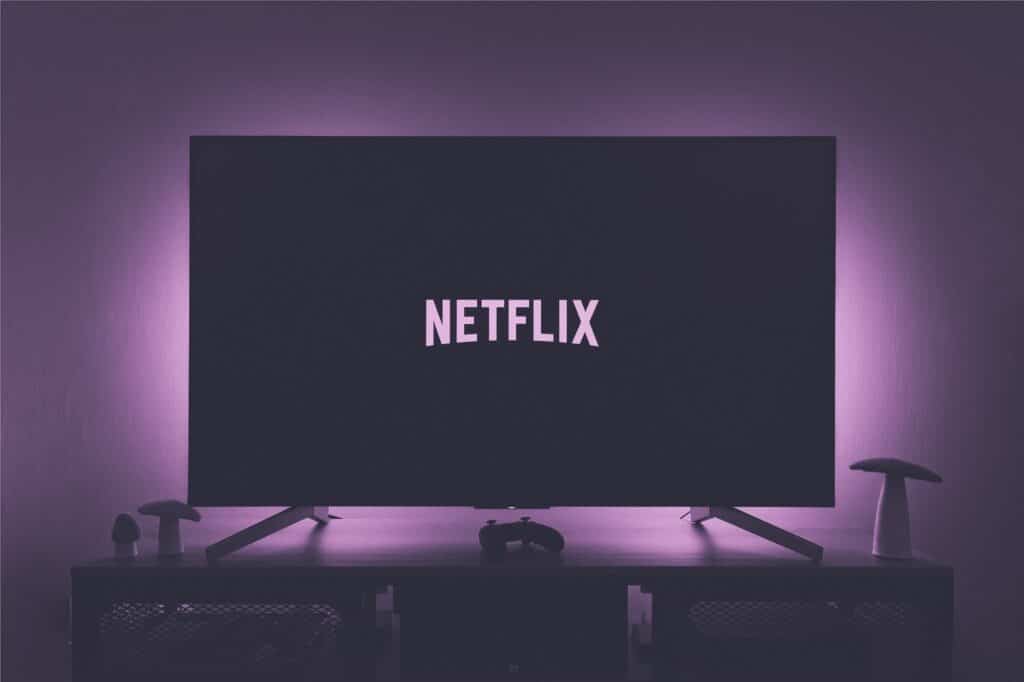The debate over binge vs. weekly release strategies has been a mainstay of the streaming landscape for years. But there may be new nuances emerging in what’s long been a strictly either-or argument.
Streamers’ embrace of the “batch” release is one example, but a close look at Amazon Prime Video’s slate suggests another strategy with the potential to reshape this discussion.
Prime Video tends to put out more series binge style, especially freshman shows, nearly 75% of which have released all episodes at once in 2025.
However, that proportion grows far slimmer as shows move into subsequent seasons. When looking at third-season releases on Prime Video this year, all titles received a weekly rollout, with not a single binge release in the bunch.

Notably, some of the streamer’s biggest hits began as binge releases before switching cadence. Prime Video’s two most watched originals of 2025 so far — Reacher and The Summer I Turned Pretty — debuted in 2022 with all their first-season episodes dropping at once.
When both returned the following year, however, they had changed to weekly rollouts (including a batch component, releasing two or three episodes on the season premiere date), with their third seasons (both released in 2025) dropping weekly as well.
Taken together, this data suggests a unique approach to series releases: Freshman titles start as binges, but once renewed, cadence “graduates” to weekly pacing.
Amazon has never publicly declared such a strategy, and the data also makes clear that this approach is not universal. Several debut series, including the hit thriller Countdown, launched with weekly rollouts this year.
But for streamers struggling to optimize their content spending, there may be sound logic in pursuing such a rhythm. Luminate Streaming Viewership (M) data reinforces the long-held notion that weekly releases lead to longer sustained engagement, as opposed to the flash-in-the-pan viewership often received by binge titles.
To take Reacher and TSITP as examples, the series’ binge-release first seasons both had audience retention rates in the low single digits, while their weekly-release third seasons held on to significantly more viewership over time. (Retention is calculated as the total minutes watched in the final seven days of a 12-week window divided by total minutes watched in the first seven days; Reacher’s relatively low retention for S3 can be explained by noting the full, eight-episode season was released over a six-week period.)

The data thus indicates a flexible approach to episode release cadence that is not defined by a strict binge-or-weekly binary. Amazon may use binge launches to gauge shows’ viability quickly, with renewal decisions shaped by how well the title debuts and how it sustains beyond the initial spike.
Once a series has captured audience attention, the release model can be changed for subsequent seasons, keeping engaged viewers coming back week to week and, crucially, potentially keeping them subscribed for multiple months.
If you’d like to dive deeper into data on Prime Video and other streamers, check out Luminate Streaming Viewership (M).


